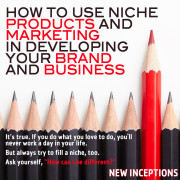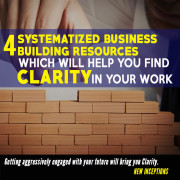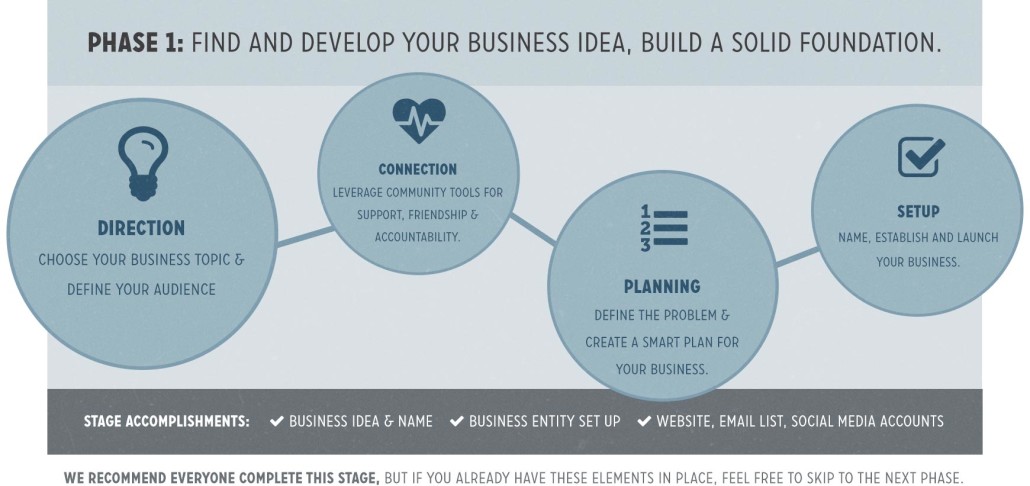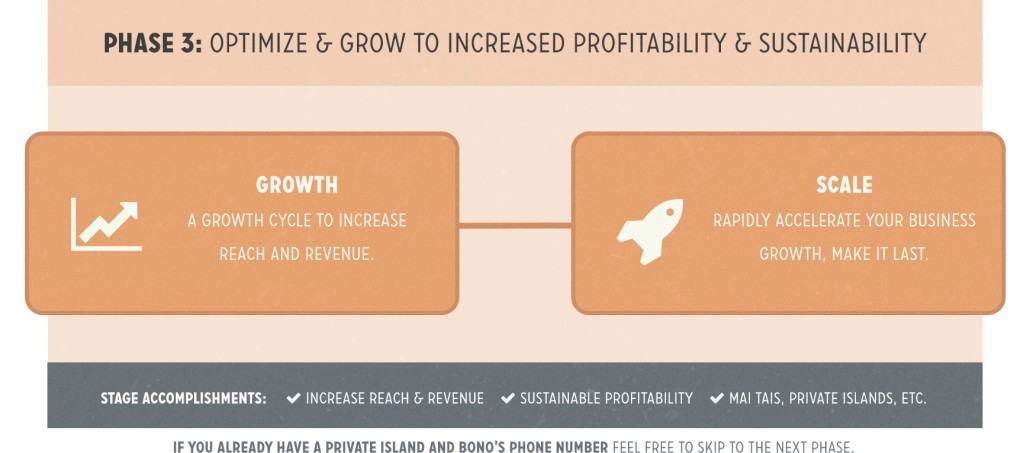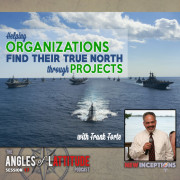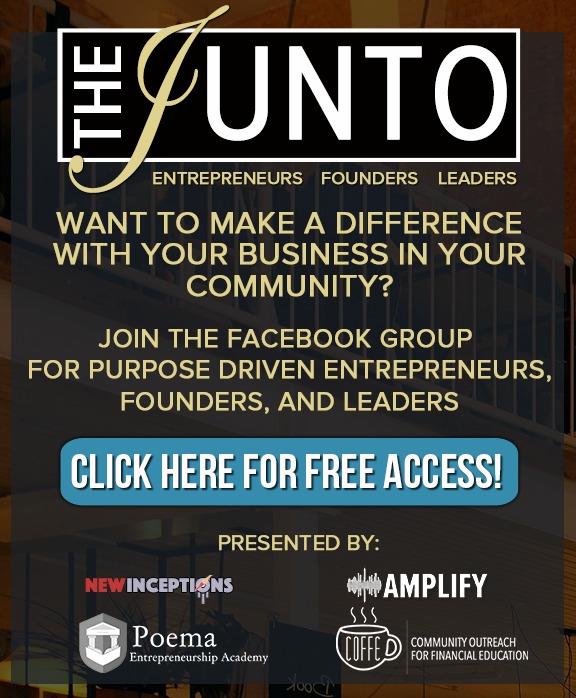Quitting Without Regret: A Critical Key to Successful Creativity
If you’re like me and many other creatives that I know, your mind never stops coming up with new ideas that you believe could add value to other people.
Chances are, you probably have some sort of journal or list somewhere that you can write down ideas on as they come to you.
Just last night, I was listening to Michael O’Neal’s (host of the Solopreneur Hour) interview with Pat Flynn about Pat’s new book, Will It Fly?, and a question came up for Pat that I’m not sure I ever truly heard him answer before until he answered it here.
Many successful entrepreneurs talk about 90 day sprints in which they focus on learning and doing one new thing. However, what Pat answered was very interesting. He said that instead of cutting up the year into 90 day sprints, he actually focuses on two new things for the entire year.
That honestly blew me away. That seems like such a small amount.
But if I think about it, that’s what he’s done. Just kinda going back through his income reports, I can think about what he was up to during that time. For example, in 2013 he wrote his first big ebook, Let Go. In 2014, he was all about systematizing and hiring “fuller” time help. He even spoke of it several times that year. That enabled him to start making and releasing more stuff including “Ask Pat” and doing more videos on YouTube in a series called SPI TV. And in 2015, he was all about going big and expanding his brand as a whole – becoming a regular speaker and embracing his “CEO” role (even though he’d say he doesn’t like that title too well!).
I’m sure Pat wanted to do all of these things for several years. If you dig, you can see he started things here and there. (For example, there’s evidence on his YouTube channel… his oldest videos are 6 years old.) He didn’t have the capacity to do all the things on a regular basis until recently. He knew how to quit without regret.
Knowing Your Capacity
Let’s face it, unless we have a team, we’re not going to be able to do everything we want to do. Really. And even then, we might not be able to. (That’s why companies continue to grow.)
There’s two reasons for this, one is that you simply have 24 hours in a day. Even if you’re a workaholic like Gary Vee, you’re still only going to be able to do so much. The second is that you come pre-programmed with certain personality traits, and there’s just going to be some things that you’re better at than not.
Even if you’re a workaholic, there’s a good chance you might risk burnout and/or miss out on other aspects of life.
As Angles of Lattitude co-host Laila recently pointed out in a ‘scope of hers, “you have to know what you REALLY want”. While she was able to work herself into working at NASA, a lot of what she did to get there forced her to skip out on other aspects of life. Similarly, while she’s always wanted to be an Professional Engineer and recently had started studying to take the test to be, she realized that it wasn’t for her… at least not right now. She’s currently starting her own brand, working a Fast Track program with Beach Body, helping with the podcast, and on top of that, she’s working part time as well. She simply didn’t have the capacity to add the test on top of all of that.
I think that this was a great choice on her part – even if, for her, it was a really painful decision. She re-realized what her capacity was and she made the decision to not go over that limit.
The Big Misconception
So, at this point, you might be thinking “Ok, that’s great for Pat and Laila, JC. But honestly, I can’t afford for my startup to fail. That’s why I HAVE to try so many things. I need to play it safe. One of these things will work.”.
Will it? Do you think that will help? To me, that sounds like a recipe for failure.
Pat and Laila are simply two recent examples I can think of in the entrepreneurial arena.
Let’s jump into the sports world for a second. This past Sunday was the Super Bowl. Do you think that Peyton Manning ever tried to become a great golfer in the years that he was becoming a legendary football player? No. He was too busy studying game film and working on his own fundamentals to become another kind of athlete. However, that would have never have crossed his mind as he’s been a pedigree quarterback his entire life.
Here’s another example: do you think that anyone that’s running for Presidency of the US in 2016 has the capacity to become president if they were focused on keeping any other kind of job outside of a political one or a business that ran itself? No way!
I’m simply getting at this simple point: There might have been people who were able to burn the candle on both ends. But if you really want something to be hugely successful, you’ll probably need to put all of your effort into that one thing.
When you start to pile up too many commitments on your plate, you have no choice but to start letting other tasks and ideas fall through the cracks.
Taking the Next Step Without Regrets
So now that I might have twisted your arm into realizing that you might have to let off the gas on some of your current efforts and/or ideas, how are you going to do so? For one, you don’t want to be considered a quitter. Secondly, you don’t want to truly give up those ideas.
I believe that there are a few good ways that you can set your mind at ease.
- Declare Victory and Move on. Realize that whatever you were working on was merely a project. If it was merely a project, and you learned something from it, declare it as a victory. Move on. For me, I’ve been pouring some time developing a couple of products since re-launching the site back in May. One was a guide to writing resumes and cover letters. The other was building the ultimate guide to connecting with anyone.After doing some groundwork and some idea bouncing and verifying, I realized that these items weren’t going to be as useful to you guys as I hoped. What I learned is that if I have any future product ideas, I really need to ask you all what would be a good product. (FYI… I do have one in the works now!)
- Prioritize Them. You can only do so much. If you need a visual, think of your capacity as being the top of a traditional stove. There are 4 burners. If you cook with a stove, you probably know you use the front two burners the most. They’re the most active. The back two are merely for more passive secondary items.Many times, I think about my efforts like this. I’m going to have two projects that are taking up most of my time. However, there are some things that while I would love to do them now, I’m going to have to make them secondary. Secondary items can not require the focus of a front burner item. If it does, I’m just going to have to remove it all together. (The last thing I need is to burn the house down, right? aka burnout.) Right now, when it comes to building New Inceptions, my front two burners are being used for building weekly content and building real friends and allies in the creative space. The back burners are building the New Inceptions audience and a product for them. I’m not doing anything else that isn’t related to accomplishing these four tasks.
- Share the Responsibility. Teams don’t have to be made of employees. You can make a voluntary team of like minded people who are going after the same goals. The main difference is that employees work for an income. Volunteers work for a feeling of purpose and belonging. The co-hosts of the Angles of Lattitude podcast are all volunteers. However, they realize that we’re all going in the same direction: to have our own brand, credibility, etc. As the show continues to gain traction, they’ll be more and more recognized as a contributor. Eventually, the audience will start seeking them as authority figures beyond the show.
This Week’s Challenge:
In today’s world, it might seem like a weakness to give up on something you’ve set out to do. You might have phrases in the back of your mind that are repeating, such as “quitters never win” and “not quitting is half the battle”. But are those things really true? I’d argue that quitters DO win. I believe that the best entrepreneurs – the best professional creators – do know when to quit. In fact, they do it all the time. They know what they should be focusing their time, energy, and money on and they quit the rest.
What should you quit doing? What should you postpone? What should you be spending more time focusing on?
Let us know in the comments below this post.



